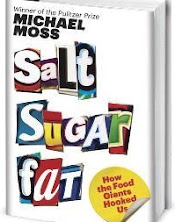Author: Maureen Ogle
Publisher: Harcourt, Inc.
ISBN: 0-15-101012-9
The fashioning of an industry required the development of numerous technological and commercial innovations. Starting out as small operators that supplied local saloons, early brewers had to devise ways to ensure consistent quality in every batch of beer they made. Upon solving that problem, brewers who expanded their operations had to resolve issues related to the preservation, distribution and packaging of their products. They had to extend the shelf life of beer so that it would be consumable when it arrived at distant destinations. This was accomplished by experimenting with recipes and by using refrigerated railroad cars for shipping. Moreover, reliable transportation and sales networks had to be cultivated. And, to protect their reputations and prevent saloon keepers from diluting their brews, or replacing them with lower quality swill, brewers began shipping large quantities of their beer in labeled bottles rather than kegs. Thus, as the brewing industry expanded, secondary industries grew alongside it.
In the late nineteenth and early twentieth centuries, a growing temperance movement threatened to dismantle the empires of such brewing giants as Anheuser-Busch, Pabst, Schlitz and others. The brewers, aware that taxes on their products accounted for more than one-third of the American government’s revenues, paid little attention to their critics. Their security was shattered in 1913, when Congress ratified the Sixteenth Amendment that established the income tax as a major source of revenue. This amendment, in conjunction with the cumulative successes of the temperance movement over the previous several decades, made conditions favorable for the passage of the Eighteenth Amendment, which prohibited the production, sale and consumption of all alcoholic beverages in the
Prohibition (enacted in 1919) was in effect from 1920 until 1933. During that time, some brewers kept their businesses alive by producing soft drinks and “near” (non-alcoholic) beer. Others diversified their companies and produced a variety of goods. Needless to say, most brewers did not survive. Those who did discovered that American culture had changed dramatically in a short fourteen year span. The American public had developed a taste for Coca Cola rather than beer. An entire generation had grown up without ever tasting beer. Thus, in the post-Prohibition era, brewers had to cultivate new images and new markets for their products. These struggles continue to this day, as American liquor consumption is still lower than it was before Prohibition.
The period from the 1930s through the 1960s was a time of consolidation. Many small and medium sized breweries went out of business or were bought out by larger companies. In the latter decades of the twentieth century, this trend toward increased centralization was countered by the home brewing movement and the microbrewing industry. Currently, even though Anheuser-Busch and Miller dominate American brewing (these two companies sell over 50% of all beer consumed in the
Carefully researched, filled to the brim with technical information and populated with colorful personalities, Ambitious Brew provides a unique lens through which to examine American culture. Ambitious Brew is more than a story about the indelible imprint German immigrants made on their adopted land. And it is more than a tale of how American consumers prompted those immigrants to adapt traditional products for new palates. Indeed, at its heart, Ambitious Brew is the fascinating story of how distinct cultural features have blended to enrich the fabric of a vibrant society. It is a story that needed to be told, and Ogle has told it very well. Beer aficionados and readers interested in popular culture and history will enjoy Ambitious Brew.
